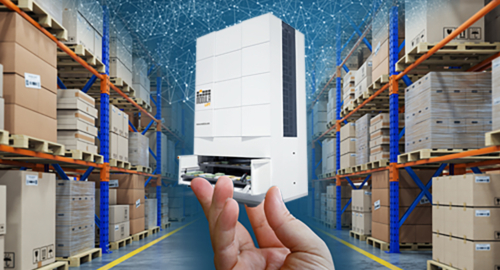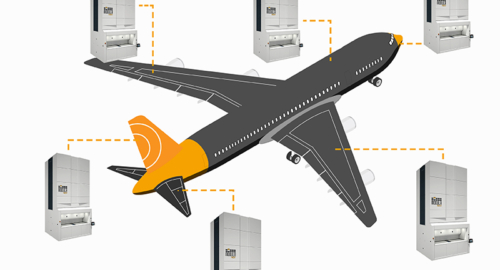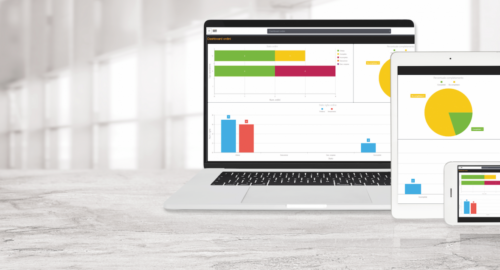When we talk about online shopping, we often refer to non-food goods, such as clothing, books, high-tech, electronics, music, and cosmetics. However, alongside these types of goods there is another sector that has experienced rapid growth in recent months, gaining traction and changing the purchasing habits of many online users, that is, e-grocery. The term e-grocery refers to the online purchase of goods in the Food & Grocery sector: from fresh and dry food products to household products, or those consumer goods traded through the retail channels.
In this article we analyze the expansion of e-grocery in recent months and the importance of warehouse logistics for the evolution of online food shopping.
The global trends of online Food & Grocery
When we talk about online grocery sales (e-grocery) worldwide, we are faced with data from completely different contexts, with different levels of development of e-commerce, due to technological, social and cultural reasons. The differences between individual economic areas also result from the spread of Covid-19 in individual territories and from the impact of the coronavirus on the citizens’ lives.
Citing research by the Kantar Group, digitalcommerce360.com reports that in 2020 there was not merely a global explosion of e-grocery: the pandemic also had a psychological impact on consumers, making them more inclined to online purchasing compared to the previous years. While in 2019 online sales of food products had increased by 22% worldwide on an annual basis, in 2020, by the end of April, online sales of food products worldwide (considering data from France, Spain, China and the UK) registered +12.4% compared to +8.8% registered in the same period of 2019 (source: digitalcommerce360.com, Kantar Group).
In 2020 the Ocado Group (one of the pioneering UK groups in the online grocery market) recorded +27% in its six-month retail revenues compared to 2019 (source digitalcommerce360.com). Walmart (one of the largest retail chains in the United States) said it recorded a 74% increase in e-commerce sales in the first quarter, adding that the pandemic encouraged increasing numbers of people to choose online purchasing with curbside pickup of groceries outside the physical store.
As emarketer.com explains, the change is also driven by the development of new solutions for the delivery of purchased goods. Compiling an initial ranking, based on data taken from an analysis carried out among online users in the United States (“The eMarketer Ecommerce Survey”, conducted in June 2020 by Bizrate Insights), in-store order pickups increased (going from 18% in February 2020 to 22% in June 2020) as did remote pickup or curbside pickup at the store (from 7% in February 2020 to 22% in June 2020). Both these methods favor social distancing. According to a study of the US market published in SDC Supply & Demand Chain Executive, among the future drivers of the increase in e-grocery will be the consolidation in the coming years of the online shopping habits established during the pandemic and the possibility of choosing between multiple types of delivery (home delivery, in store pick-up, locker delivery, curbside pickup, and others).
Managing the logistical needs of e-grocery
The Covid-19 pandemic has led to a sudden transformation in consumer shopping habits. To continue to be efficient, the large-scale retail network has expressed the need for solutions capable of adapting to the many transformations underway. At the moment, different situations coexist: from traditional supermarkets where private customers mix with pickers (employees who physically “prepare” the orders placed online) to dark stores, which are very similar to supermarkets, but for pickers only.
We are therefore experiencing a noticeable evolution in warehouse logistics and picking for large-scale distribution. So, what direction to go in? In this transition phase, where the digital channel (e-grocery) is gaining traction and becoming a strong competitor for traditional in-person channels, it is necessary to evaluate the available alternatives and carefully choose the solution that best fits the business’ needs. A hasty or careless choice may lead to a useless waste of time and resources and, of course, cannot provide an adequate response to meet specific conditions and needs.
Logistics in e-grocery: from resource optimization to internal reorganization
The digitalization of logistics processes and the advent of new warehouse management systems are joined by the development of Micro-fulfillment Centers (MFCs), that is, small centers with a maximum size of 550 square meters located in urban areas and specialized in the preparation and fulfillment of online orders. These centers were created to meet the need for a faster management of deliveries, which can even take place on the same day as the order.
The transformation of consumer habits is reflected on the different logistical needs expressed by large-scale retail trade. The traditional in-person channel and the new digital channel are characterized by numerous options and even the pick-up of an order has become multi-channel:
- Click & Collect: previously ordered groceries are picked up without getting out of the car or groceries ordered over the phone are picked up in the nearest store, also known as BOPIS (Buy Online Pick Up In Store);
- Drive & Collect: goods are purchased online and picked up at a distribution warehouse, within a set time;
- Home Delivery: goods are delivered to the customer’s home;
- Contactless Delivery: home delivery at a safe distance.
Modula automatic storage systems for e-grocery logistics management
Today Modula is able to offer a range of warehouse management solutions designed to fully meet the needs of customers in the large-scale retail trade and the e-grocery market. Modula’s logistics management systems stand out for 3 characteristics: modularity, cost optimization, and a gradual approach. More specifically:
- modularity: Modula offers systems that can be adapted to the different needs of the customer, in terms of both size and functions (for example, vertical storage systems and new horizontal carousels, or temperature-controlled automatic storage systems);
- cost optimization: it is possible to choose a system based on what is really needed, starting from the specific needs of the company and developing a customized, efficient and high performance system;
gradual approach to warehouse automation: thanks to those solutions that integrate manual and automatic systems (“hybrid” solutions), an initial step is taken towards limiting the human factor, without totally removing it and thereby obtaining a lower psychological impact. The integration of technologically advanced automatic systems in the management of warehouse operations can, in fact, prove to be a significant initial obstacle for those approaching this type of solution for the first time.
The technical advantages of Modula’s e-grocery logistics solutions
The Modula logistics management systems are the starting point in the evolution of the retail channels towards e-grocery. The main advantages of the solutions developed by Modula include:
- easy and quick installation of automatic vertical storage systems: just one week is required to install a vertical storage system and this involves only limited disruption for operations, with limited interruptions of the customer’s activities;
- easy integration with warehouse management software: the Modula WMS software and the customer’s ERP systems communicate and interface in a seamless manner;
- possibility of integration with Modula picking systems and/or with materials handling systems, including robots or autonomous mobile robots (AMR), to achieve a “goods to person” picking approach and make the most of all its advantages;
- flexibility in picking: fast and efficient picking management, adaptable to different operators based on the volume of orders and work peaks;
excellent management of fresh and dry food products, with temperature-controlled systems that allow adequate storage of fresh and dry products, while keeping them away from light, dust and heat sources.
The e-grocery management of fresh products with Modula automatic storage systems
Fresh produce management solutions deserve special attention. Modula designs and manufactures temperature-controlled automatic storage systems, which maintain the internal temperature between 2°C and 25°C. These systems are perfect for storing all fresh and dry products and fully meet the needs of large-scale distribution, where an average temperature of 5°C is usually adopted for the preservation of these types of goods. Furthermore, temperature-controlled automatic storage systems can be cheaper than traditional refrigeration systems.
Modula’s temperature-controlled automatic storage systems are an optimal solution for e-grocery and can be used in different phases:
- in the order preparation phase (think for example of pickers who work in dark stores): with an automatic storage system, the preparation of orders becomes more efficient and faster;
- in the prepared order storage phase: prepared orders can be stored in optimal conditions, pending pick up by the customer or home delivery.
The increase of online options by retailers has paved the way for a more mature management of warehouse logistics and the use of new systems for the storage and preservation of goods, increasingly oriented towards efficiency and performance.
Want to know more?



